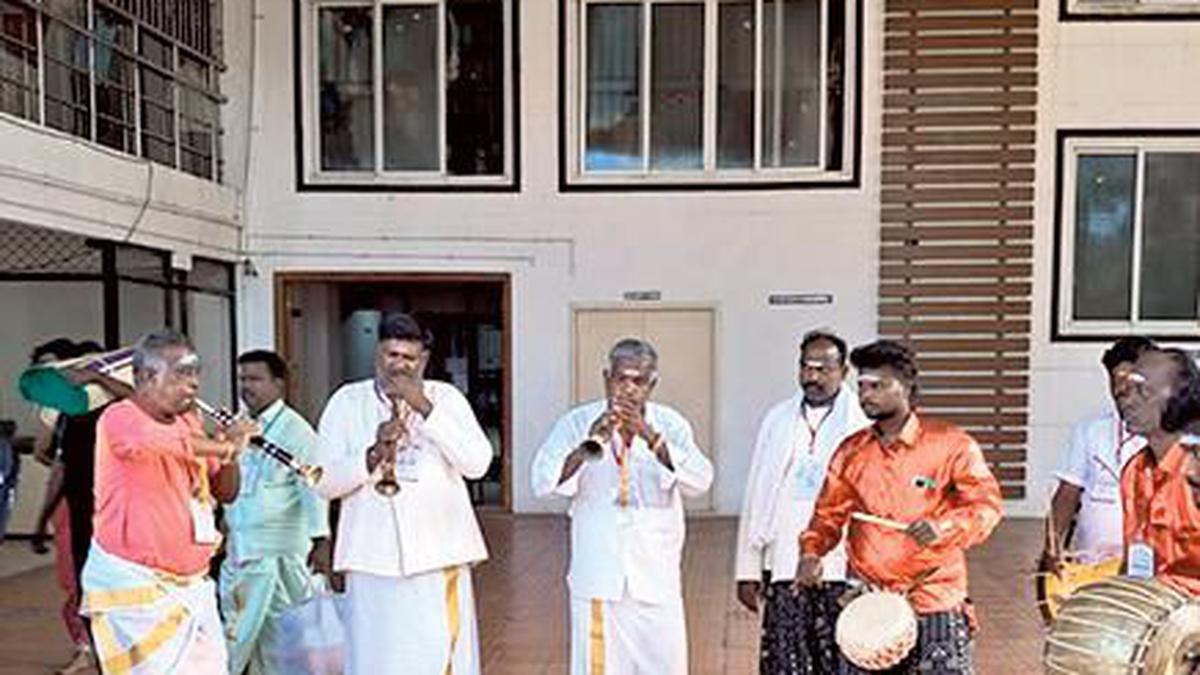
Man Melam, and the evolution of nagaswaram
The Hindu
Chennai's Man Melam drum, a primitive instrument, offers insight into the evolution of nagaswaram and thavil music.
The name Man Melam (drum made of clay) itself suggests its ancientness. But it seems to have been stuck in time and has not developed further.
The Man Melam troupe of Sibi of Salem district, which performed at the Chennai Sangamam organised by the Department of Art and Culture, offers a glimpse into the evolution of nagaswaram and thavil music. “The percussion instrument — Man Melam — accompanies timiri type of nagaswaram. Timiri is the predecessor to the present-day pari nagaswaram. While nagaswaram and thavil music have become outstanding classical instruments, Man Melam continues to remain a primitive instrument,” said B. Hemanathan, Deputy Director of the Department of Art and Culture, and an accomplished nagaswaram player.
The drums of modern-day percussion instruments are made of wood, particularly the wood of jackfruit. The drums of Man Melam are covered with the skin of cows and other milch animals on both sides. The reed or seevali of timiri nagaswaram of Man Melam is made of palm leaves. It also lacks clear distinction of ‘valanthalai’ and ‘thoppi’ of thavil and mridhangam, the highly evolved percussion instruments. “Thudumpu, another percussion instrument, is also a part of the Man Melam or Man Mathalam troupe. We play at marriages and temple festivals,” Mr. Sibi said. The leader of the team plays the short-type timiri nagaswaram, capable of producing high-pitch sound, accompanied by Man Melam.
It was late nagaswaram player Thiruvavaduthurai Rajarathinam Pillai, who redesigned the nagaswaram from timiri as the present day larger pari with the help of Ranganathan Achari of Naraingampetti that secured the Geographical Indication (GI) tag for nagaswaram-making. “The size of the nagaswaram became larger in stages corresponding to the lowering of its pitch between the 1920s and the 1950s. Since 1950s, its size has remained constant...,” writes Japanese scholar Terada Yoshitaka in his book, T.N. Rajarattinam Pillai: Charisma, Caste Rivalry and the Contested Past in South Indian Music.
While the high pitch enabled the sound of the instrument to travel a great distance, invention of microphones rendered them redundant as they demanded extraordinary lung power of the nagaswaram players. Though nagaswaram remains a pre-eminent classical wind instrument, Man Melam confined itself to the realm of folk music.





















 Run 3 Space | Play Space Running Game
Run 3 Space | Play Space Running Game Traffic Jam 3D | Online Racing Game
Traffic Jam 3D | Online Racing Game Duck Hunt | Play Old Classic Game
Duck Hunt | Play Old Classic Game











